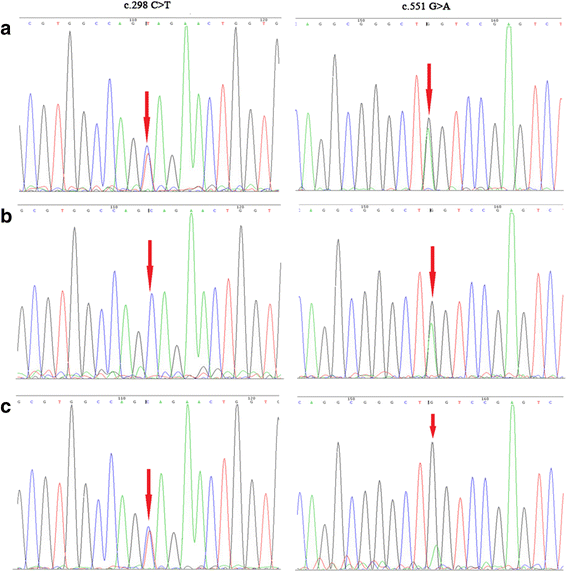Identification of two novel null variants in CLN8 by targeted next-generation sequencing: first report of a Chinese patient with neuronal ceroid lipofuscinosis due to CLN8 variants
- PMID: 29422019
- PMCID: PMC5806251
- DOI: 10.1186/s12881-018-0535-7
Identification of two novel null variants in CLN8 by targeted next-generation sequencing: first report of a Chinese patient with neuronal ceroid lipofuscinosis due to CLN8 variants
Abstract
Background: Neuronal ceroid lipofuscinoses (NCLs) are one of the most frequent childhood-onset neurodegenerative pathologies characterized by seizures, progressive cognitive decline, motor impairment and loss of vision. For the past two decades, more than 430 variants in 13 candidate genes have been identified in the affected patients. Most of the variants were almost exclusively reported in Western patients, and very little clinical and genetic information was available for Chinese patients.
Case presentation: We report a Chinese boy whose clinical phenotypes were suspected to be NCL, including intractable epilepsy, cognitive and motor decline and progressive vision loss. Using targeted next-generation sequencing, two novel null variants in CLN8 (c.298C > T, p.Gln100Ter; c.551G > A, p.Trp184Ter) were detected in this patient in trans model. These two variants were interpreted as pathogenic according to the variant guidelines of the American College of Medical Genetics and Genomics.
Conclusions: This is the first case report of NCL due to CLN8 variants in China. Our findings expand the variant diversity of CLN8 and demonstrate the tremendous diagnosis value of targeted next-generation sequencing for pediatric NCLs.
Keywords: CLN8; Neuronal ceroid lipofuscinoses; Novel null variant.
Conflict of interest statement
Ethics approval and consent to participate
All research was approved by the ethics committee of Capital Institute of Pediatrics (SHERLL 2015069). The patient’s parents have provided written informed consent.
Consent for publication
The patient’s parents gave written informed consent to studies and publication of clinical information, images and sequencing data.
Competing interests
The authors declare that they have no competing interests.
Publisher’s Note
Springer Nature remains neutral with regard to jurisdictional claims in published maps and institutional affiliations.
Figures


References
-
- Wisniewski KE, Zhong N. Batten disease: diagnosis, treatment, and research. London: Adv Genet. Academic; 2001.
Publication types
MeSH terms
Substances
LinkOut - more resources
Full Text Sources
Other Literature Sources
Miscellaneous

